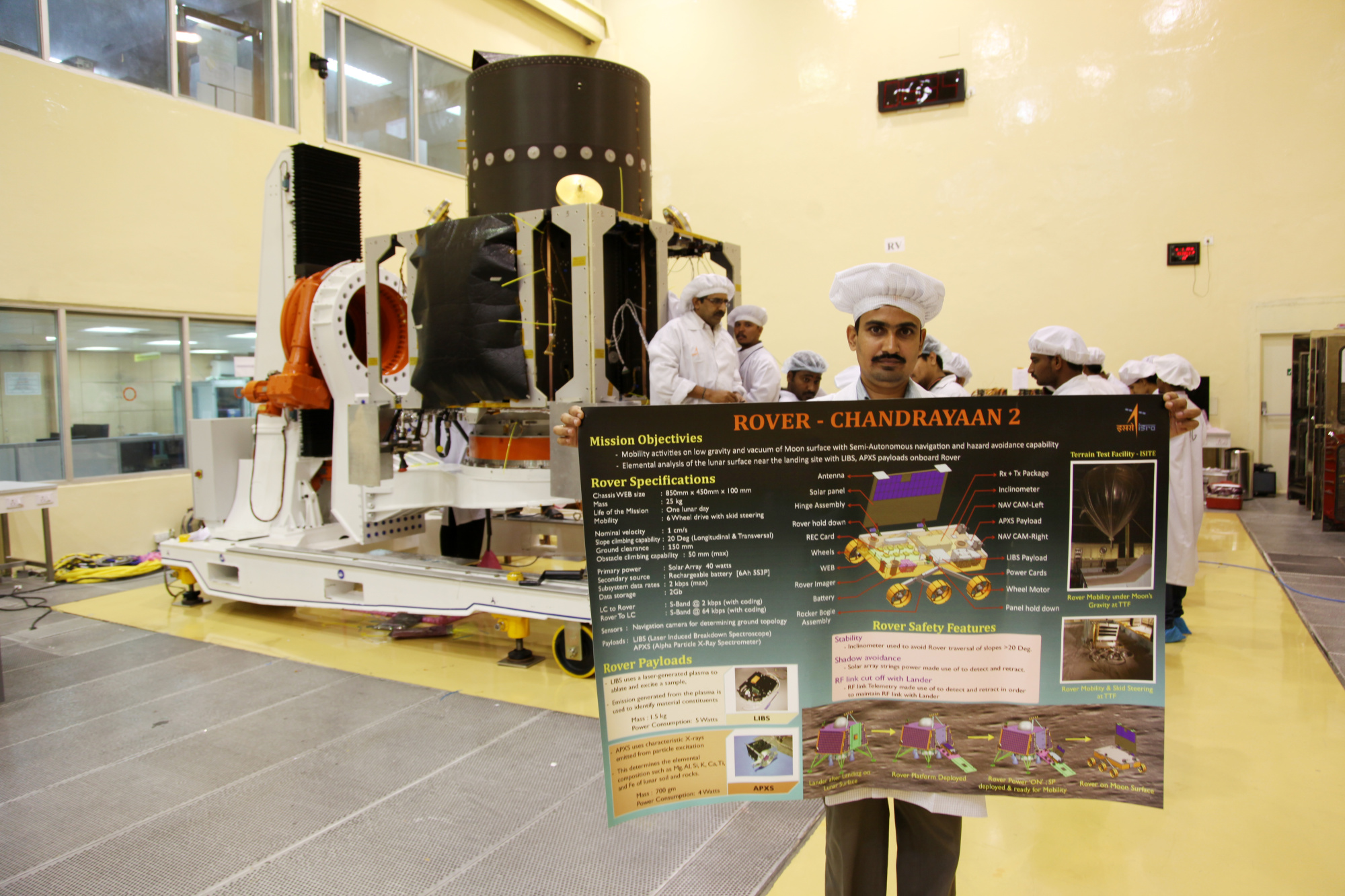 "Chandrayaan-2" is preparing to fly in a clean room
"Chandrayaan-2" is preparing to fly in a clean roomPerhaps lunar helium-3 could become an analogue of terrestrial oil: all countries are trying to put under their control reserves of this fuel for trillions of dollars.
It is estimated that 0.02 grams of helium-3 during the fusion reaction will emit as much energy as full burning of 1 barrel of oil gives, and 40 tons of helium-3 will be enough to provide the US with energy for a whole year. It remains only to launch thermonuclear fusion.
In addition to the United States, Russia and China, India has become another state that has announced plans to produce helium-3 on the moon. The Indian lunar program provides for sending a mission to the South Pole of the Moon, where the device will conduct reconnaissance,
reports the Indian edition of
The Economic Times . The launch of the Chandrayan-2 station with an orbiter, a landing module and a lunar rover is planned in October 2018. The six-wheel solar-powered vehicle will be able to work autonomously for at least 14 days within a radius of 400 meters from the landing module.
Back in 2010, the US called helium-3 deficiency a
threat to the country's national security . Then the parliament held hearings on this issue. Helium-3 is the only reliable and safe material for neutron counters, that is, for radiation detectors. To date, there is no real alternative for its use. As it was said at the hearings in parliament, Russia used to supply the valuable substance in the amount of 25,000 liters per year, but then stopped deliveries, because it was decided to "create strategic reserves for its own consumption." Helium-3 is a decay product of tritium, which has not been produced since 1988.
On Earth, helium-3 is practically not found in its natural form (although it is
searching for terrestrial deposits ), whereas on the moon, according to various estimates, reserves range from 500 thousand to 10 million tons. According to experts, if the reserves are 1 million tons, then about a quarter of this amount can realistically be delivered to Earth. Gerald Kulcinski, director of the Fusion Technology Institute at the University of Wisconsin-Madison and a former member of the NASA Advisory Board, estimates the cost of fuel at about $ 5 billion per ton.
Helium is irreplaceable not only for radiation detectors, but also in many other areas. For example, in devices for magnetic resonance imaging (MRI), superconducting electromagnets operating in liquid helium are used. This is the most optimal refrigerant, and the absence of helium would have unpleasant consequences. In addition to magnetic resonance imaging, liquid helium is used as a coolant for cooling superconducting magnets in infrared and high-frequency radiation detectors, SQUID magnetometers, scanning tunneling microscopes, and accelerators of charged particles. For example, the Large Hadron Collider at CERN uses
96 tons of liquid helium to maintain a temperature of 1.9ºK.
Liquid helium is also used in dissolving cryostats and cryogenic electric machines. Helium gas - in metallurgy as a protective inert gas for the smelting of pure metals, in the food industry (food additive E939) as a propellant and packaging gas, for filling air-floating vessels (airships and aerostats) as a safe alternative to hydrogen, in cylinders for diving, for filling balloons and shells of meteorological probes, for filling gas discharge tubes, as a coolant in some types of nuclear reactors, as a carrier in gas chromatography, for searching for leaks in ruboprovodah boilers and as a working medium component in the helium-neon lasers, for purging fuel tanks of liquid rockets, etc.
But the most important thing is that helium-3 is a
promising fuel for thermonuclear energy in the distant future . Not for nothing in the game Mass Effect, humanity uses helium-3 as the main fuel, and in the movie "Moon 2112" industrial production of helium-3 on the moon is conducted, to produce energy on Earth.
Maybe these sci-fi plots will soon come to life. According to the estimates of scientists, the lunar reserves of fuel will be enough to provide the Earth’s energy needs for the next 250 to 500 years.
“Countries that have the potential to deliver this source from the moon to the earth will dictate this process,” said K. Sivan, chairman of the Indian Space Research Organization. “I don't want to be part of them, I want to lead them.”
Lunokhod dispatch is the first step of the Indian lunar program. In the future, the country does not exclude the launch of the lunar orbital station and the landing of people on the lunar surface. Unlike Russia, the Indian government does not name a specific timeframe when it intends to implement these plans.
So far in the 21st century, only one country has sent a landing module and a lunar rover to the lunar surface: this is China. US plans to launch the orbiter in the early 2020s.